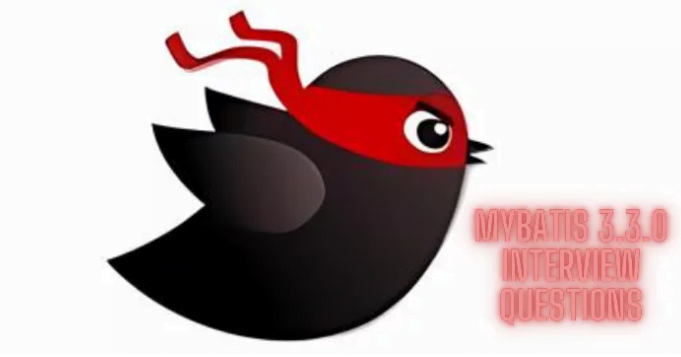Introduction to MyBatis
MyBatis is a powerful persistence framework that simplifies the interaction between Java applications and databases. It offers developers an efficient way to map SQL statements to objects, streamlining data access without sacrificing control over their queries. With its growing popularity, many companies are incorporating MyBatis into their tech stacks, making knowledge of this framework crucial for aspiring developers.
As you prepare for job interviews in this competitive field, it’s essential to familiarize yourself with the latest version: MyBatis 3.3.0. This release brought several enhancements and features worth discussing during your interview process. By understanding key concepts and potential questions regarding MyBatis 3.3.0, you can confidently demonstrate your expertise and stand out among other candidates.
Let’s dive into common interview questions related to MyBatis 3.3.0 and explore effective ways to tackle them!
What’s new in MyBatis 3.3.0?
MyBatis 3.3.0 introduced several exciting enhancements that improve usability and performance. One of the standout features is the support for Java 8, which allows developers to leverage lambda expressions and method references in their queries.
Another significant update is the improved XML mapper parsing speed. This enhancement reduces overhead when loading mappers, making applications more efficient overall.
The release also brought about dynamic SQL improvements, allowing for greater flexibility in building complex queries without cluttering codebases with boilerplate logic.
Additionally, MyBatis 3.3.0 includes better error handling mechanisms through enhanced exception reporting tools, ensuring developers can debug issues quickly and effectively.
With these advancements, MyBatis solidifies its position as a go-to ORM framework for Java developers looking to streamline their data access layers while maintaining control over SQL execution.
Most Common Interview Questions on MyBatis 3.3.0
When preparing for interviews focusing on MyBatis 3.3.0, candidates often encounter a range of commonly asked questions.
One frequent question revolves around the architecture of MyBatis. Understanding its core components can set you apart from other applicants.
Another popular inquiry is about mapping files and their significance in the framework. Be ready to discuss how they facilitate SQL statement management.
Interviewers also love to ask about configuration settings. Knowing how to configure data sources can demonstrate your practical knowledge with real-world applications.
Questions regarding caching strategies are also common. Be prepared to explain both first-level and second-level caches within the context of performance optimization.
Expect queries related to dynamic SQL as well—specifically how it simplifies complex query generation through XML or annotation-based approaches.
How to Answer These Questions
When tackling MyBatis 3.3.0 interview questions, clarity is key. Understand the concepts thoroughly before the interview day. This ensures your responses are confident and informed.
Use real-world examples from your experience with MyBatis to illustrate your points. Concrete scenarios can showcase not only your knowledge but also practical application.
Practice articulating complex ideas simply and concisely. Interviewers appreciate when candidates can break down intricate topics into digestible parts.
Stay updated on recent developments in MyBatis since its release of version 3.3.0, as this shows initiative and a genuine interest in the technology.
Engage with the interviewer by asking clarifying questions if you’re unsure about what they’re asking. It demonstrates that you value effective communication and want to provide accurate answers rather than guessing blindly.
Maintain a calm demeanor throughout the discussion; it will reflect confidence in your skills and expertise.
Additional Tips for Acing the Interview
Preparation is key. Familiarize yourself with the MyBatis documentation and recent updates in version 3.3.0. Understanding features like dynamic SQL, caching mechanisms, and annotations will give you an edge.
Practice coding examples that demonstrate your skills with MyBatis. This hands-on experience can help solidify concepts in your mind.
Think about real-world scenarios where you’ve used MyBatis effectively. Share these experiences during the interview to showcase your practical knowledge.
Stay calm and confident while answering questions. If you’re unsure about something, it’s okay to admit it rather than guess incorrectly.
Engage with the interviewer by asking insightful questions related to their use of MyBatis or challenges they face within their projects. This shows genuine interest and can set you apart from other candidates looking to ace their mybatis 3.3.0 interview questions.
Conclusion
MyBatis has gained significant traction among developers due to its simplicity and ease of use. Preparing for interviews focused on MyBatis 3.3.0 can be daunting, but with the right knowledge and strategies, you can navigate these discussions confidently.
Understanding key features of MyBatis 3.3.0 is essential, especially the enhancements it introduced—such as new mapping options and improved performance capabilities. Familiarizing yourself with common interview questions will give you an edge over other candidates.
Practicing your responses and being prepared to demonstrate your understanding through examples will make a strong impression during interviews. Always remember that showcasing your practical experience can set you apart from others who may only have theoretical knowledge.
A well-rounded grasp of MyBatis combined with strategic preparation for your interview will help ensure you’re ready to tackle any question thrown your way about this powerful framework. With focus and determination, you’ll be equipped to succeed in interviews centered around MyBatis 3.3.0 interview questions.
